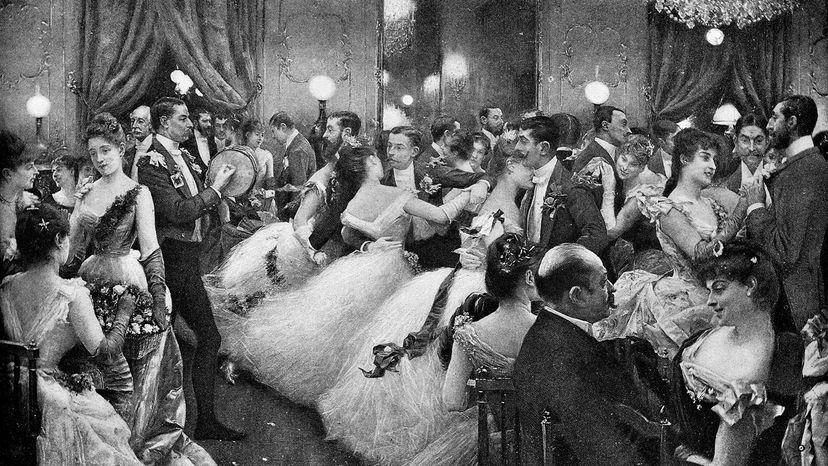
Image: powerofforever/Getty Images
If a young lady saw a gentleman she knew out in public and recognized him, how must he then respond?
by touching the brim of his hat
by lifting his hat
He must also use the hand farthest away from the lady to lift his hat.
by bowing in her direction
Advertisement
What is "cutting" in Victorian terms?
when a gentleman tries to dance with a lady who is already dancing with another man
staring at someone you know, but not showing any recognition
The Victorian book "Cassell's Household Guide" called cutting the most "ill-mannered act."
verbally insulting someone
Advertisement
What time of day was a Victorian woman expected to be dressed and ready to receive any visitors?
10 to 12 a.m.
1 to 3 p.m.
3 to 5 p.m.
Visitors could drop by anytime between 3 and 5 p.m., although closer friends could wait until the later part of that time slot.
Advertisement
When were people expected to arrive for a Victorian dinner party?
right on time
15 minutes early
15 minutes late
The intent behind this rule isn't clear. But since the average dinner party had 10 courses plus dessert, that might have given the host a grace period to get everything ready.
Advertisement
How many "seasons" did the typical Victorian young woman have to find herself a husband before spinsterhood became all but certain?
one
three
The courtship "season" was a series of balls and other events, held primarily from April to June each year, when young women had the chance to meet eligible young men. If a woman went through two or three of these seasons without finding a husband, she was on the path to permanent spinsterhood.
five
Advertisement
What was the typical RSVP window for a ball?
one day after receipt of the invitation
The invitations were usually sent between three and six weeks prior, and a response was expected immediately.
one week after receipt of invitation
An RSVP was not necessary. Presence was expected.
Advertisement
Dance cards were booklets worn on the wrist of ladies at balls that had space to write the names of upcoming dances and the men they were going to partner with. Which of these was a big dance card faux pas?
having an empty dance card
writing the same man's name for the first and last dances
dancing more than three times with the same gentleman
Since the purpose of a ball was to be sociable and mingle, a gentleman should not try to monopolize a lady's time by claiming all of her dances. Unless, we can assume, she wants him to.
Advertisement
How was bread eaten in Victorian times?
broken into smaller morsels
Victorians never picked up a whole piece of bread to chow down. Quelle horreur!
with a knife and fork
with a dainty bite
Advertisement
To avoid mud while walking, how should a lady hold her skirt?
evenly on both sides, with both hands
only on the right side, using the right hand
Lifting the skirt with both hands showed far too much ankle for Victorian tastes. This was only acceptable if the mud was really deep.
She should wait for a servant to hold the skirt.
Advertisement
How long was a widow expected to don full mourning dress?
one year
two years
Mourning attire was a big deal in Victorian times. A widow was expected to wear deep black for two years; in the last six months, she could go into "half-mourning," which meant adding some white, gray or lavender colors alongside the black. Some widows, like Queen Victoria, wore mourning clothes for the rest of their lives.
until remarriage
Advertisement
You Got:
/10
powerofforever/Getty Images